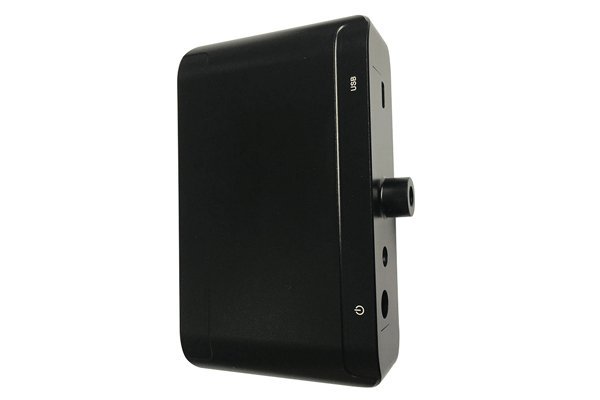Have you ever wondered what it takes to create precision parts that fit together seamlessly? In the world of computer numerical control (CNC) machining, this is not just a matter of luck; it’s about the right tools and techniques. In fact, according to estimates by industry experts, nearly 40% of production inefficiencies can be traced back to improper tooling choices. This blog will explore the critical factors to consider when selecting tools for CNC turning prototypes, ensuring that your prototypes are not just functional but also efficient and cost-effective.
Understanding CNC Turning and Prototyping
Before diving deep into tooling considerations, let’s clarify what CNC turning and prototyping mean. CNC turning is a machining process where a piece of material is rotated while a cutting tool removes unwanted material to form the desired shape. This process is widely used in industries such as aerospace, automotive, and medical devices for creating prototypes that require high precision and repeatability.
Prototyping is critical in product development as it allows designers and engineers to test designs, materials, and functions before moving to mass production. The tools you choose play a significant role in the success of your prototypes. Let’s examine some essential factors to aid in tool selection.
Material Type
The first and foremost consideration in tool selection is the material of the prototypes you intend to create. Different materials—such as aluminum, titanium, stainless steel, and various plastics—require tooling designed specifically for their unique properties. For example, titanium is significantly harder than aluminum, necessitating tools with advanced cutting geometries and coatings to prevent wear and tear.
Solution: Make a material list in advance of your project and consider tools that are specifically designed to handle these materials. Having an understanding of the machinability of each material can also guide your decisions and ultimately save costs.
Tool Geometry and Design
Tool geometry greatly affects the performance and finish of the machined part. The shape of the cutting edge, relief angles, and tool type (inserts, solid tools, etc.) must all be considered. For CNC turning, common tool types include:
Solution: Use simulation software that examines the machining process under various conditions to understand which geometries will work best for your particular application.
Cutting Speed and Feed Rate
Optimizing cutting speeds and feed rates is crucial for achieving both productivity and part quality. Cutting speeds that are too high can lead to excessive tool wear and poor surface finish, while speeds that are too low can hinder productivity.
Solution: Refer to tool manufacturer guidelines and use tables to find the optimal cutting speeds and feed rates for the materials being processed. Experimenting with small batches can also help find the sweet spot for your setup.
Tool Material and Coating
The material and coating of your cutting tools can significantly influence their performance and lifespan. High-speed steel (HSS) and carbide are commonly used materials, while coatings such as TiN (Titanium Nitride) or TiAlN (Titanium Aluminum Nitride) provide enhanced durability and heat resistance.

Solution: Evaluate the kind of production volumes and the type of machining operations you need. Choose tool materials and coatings based on how they align with both your budget and performance requirements.
Precision and Tolerance Requirements
Another critical factor is the accuracy and tolerance requirements of your prototypes. CNC machining can achieve high precision, but it comes down to the tools being capable of maintaining that precision throughout the turning process.
Solution: Consult with machine engineers and tool manufacturers to ensure that the tools you select can meet the designed tolerances and workability of your prototypes.
Tool Accessibility and Compatibility
CNC machines vary in design and configuration, and so do the tools. It is essential to select tools that are compatible with the CNC machine being used, including considerations for the tool holder setup.
Solution: Always check the tool compatibility with your CNC machine specifications. Consult the machine manual or reach out to suppliers for insights.
Cost-Effectiveness and Availability
While it can be tempting to choose the most advanced tools, it’s crucial to assess the cost-effectiveness for your specific production needs. High-end tools often come with high price tags, but they may not always yield the necessary performance benefits for prototyping.
Solution: Consider your production volume, product specifications, and budget. Sometimes, mid-range options are available that provide sufficient performance at a lower cost. Availability is also essential—tools should be readily available to prevent delays in your production timelines.
Performance and Tool Life
The longevity of your tools is equally significant when considering CNC turning for prototypes. Frequent tool replacements can increase manufacturing costs and downtime.
Solution: Look for tools that have a reputation for longevity. This might involve investing slightly more upfront but can save resources in the long run.
**
Selecting the right tools for CNC turning prototypes is not just about choosing what looks good on paper; it involves a detailed understanding of materials, geometries, speeds, and more. The success of your prototyping endeavors rests on these decisions, impacting product quality, manufacturing efficiency, and overall costs.
Investing time in understanding these factors will ultimately lead to more successful prototypes and a smoother transition to production. Remember, the right tooling can be the difference between a successful prototype and one that never makes it off the drawing board.
As technology continues to evolve and industries strive for innovation, the importance of well-informed tooling decisions will only grow. So, as you embark on your next CNC turning project, consider these essential factors carefully to ensure that your prototypes meet and exceed industry standards.






